Winter doesn’t provide ideal growing requirements of a plant. Though few cold-hardy plants can thrive, most plants struggle to survive due to limited sunlight, freezing temperature and reduced enzyme activity.
However, if you’re looking to keep yourself busy throughout the winter, then growing veggies indoors is an optimal solution.
Growing indoors vegetable garden can be intimating for novice gardeners, but with proper care and correct guidance it can turn out to be a gratifying achievement.
Before diving to the list of veggies that you can grow indoors in the winter, lets first understand fundamentals of indoor gardening.
How to Grow Vegetables Indoors in Winter?
If you can’t afford a greenhouse, you can still grow vegetables indoors with enough light and the right temperature. Choosing the right plants is key to success. The second most important step is providing extra care so your plants stay strong even when days are short. With proper light, warmth, and watering, your indoor garden can thrive all winter.
Choosing the Right Plants
Pick vegetables that grow well in low light, like spinach, lettuce, kale, and arugula. These greens love cool air and need little sun. Herbs such as basil, parsley, chives, cilantro, and thyme also grow well indoors. With enough light, you can even grow dwarf tomatoes and peppers.
Provide Enough Light
Winter days are short, so give plants 10–12 hours of extra light daily. LED grow lights work best because they mimic sunlight. Place plants near a south-facing window and turn them daily for even growth.
Maintain Ideal Conditions
Keep temperatures between 65°F and 75°F during the day. Avoid placing plants near cold drafts or hot vents. Maintain 40–60% humidity using water trays, a humidifier, or by grouping plants together.
Water and Feed Properly
Check soil often and water only when the top inch feels dry. Use well-draining pots and add mulch to retain moisture. Mix compost or use liquid fertilizer every few weeks during active growth.
Maximize Space and Care
Rotate crops for continuous harvests. Watch for pests and wipe dust off leaves. Stack pots or use shelves to grow more in less space.
27 Vegetables to Grow Indoors in the Winter
Winter doesn’t mean giving up fresh vegetables. With a sunny windowsill or grow lights, you can harvest greens, herbs, and fruiting vegetables throughout winter.
Last year, I started with three lettuce pots on my kitchen counter. Within weeks, my skepticism vanished as I snipped fresh salad leaves for dinner.
1. Lettuce
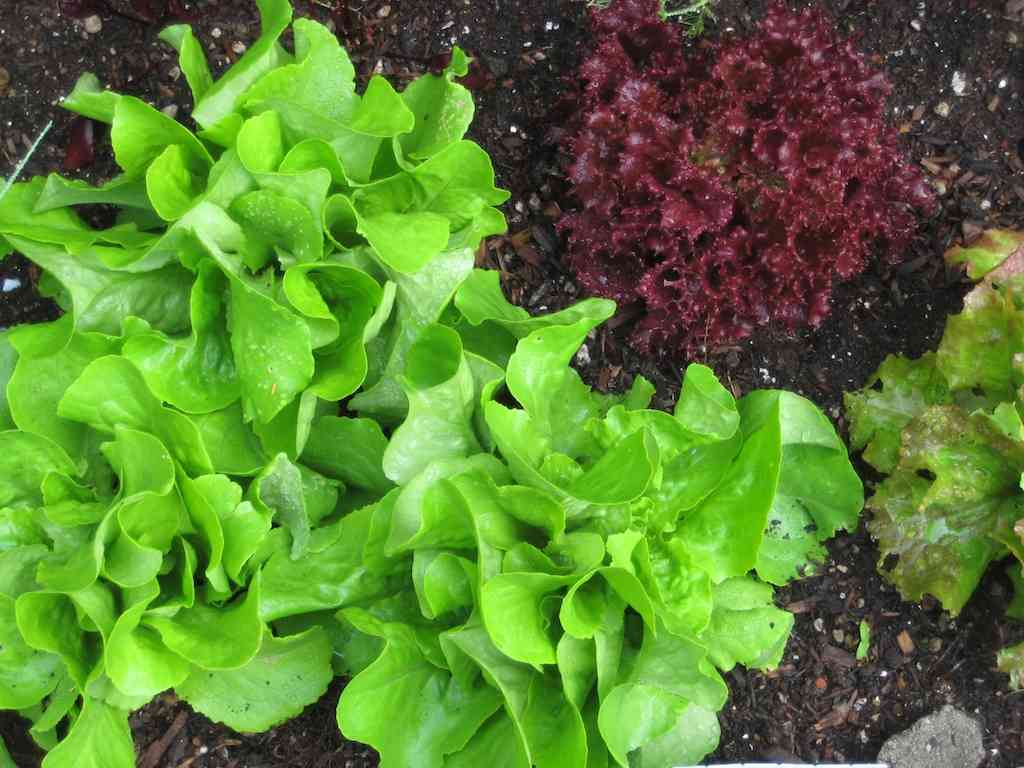
Lettuce tops the list for indoor winter growing because it genuinely doesn’t mind cooler temperatures and lower light. Loose-leaf varieties like buttercrunch, red leaf, and oakleaf work best since you can harvest outer leaves while the plant keeps producing. Seeds sprout in just 7-10 days, and you’ll be eating salads within a month.
Plant lettuce seeds a quarter-inch deep in 6-inch containers with drainage. Keep soil moist but not soggy. Provide south-facing light or 10–12 hours under grow lights. Harvest outer leaves regularly to encourage continuous growth throughout winter.
2. Spinach

Spinach actually prefers the cooler conditions you’ll find indoors during winter. It’s packed with nutrients and grows relatively quickly—most varieties are ready to harvest in 4-6 weeks. Baby spinach varieties work particularly well for indoor containers since they don’t need as much root space as full-sized plants.
Sow spinach seeds half an inch deep, two inches apart in 6–8 inch containers. Keep soil moist and water when the top inch is dry. It tolerates partial shade. Harvest outer leaves at 4–6 inches. Plants will continue producing new growth for several months.
3. Kale
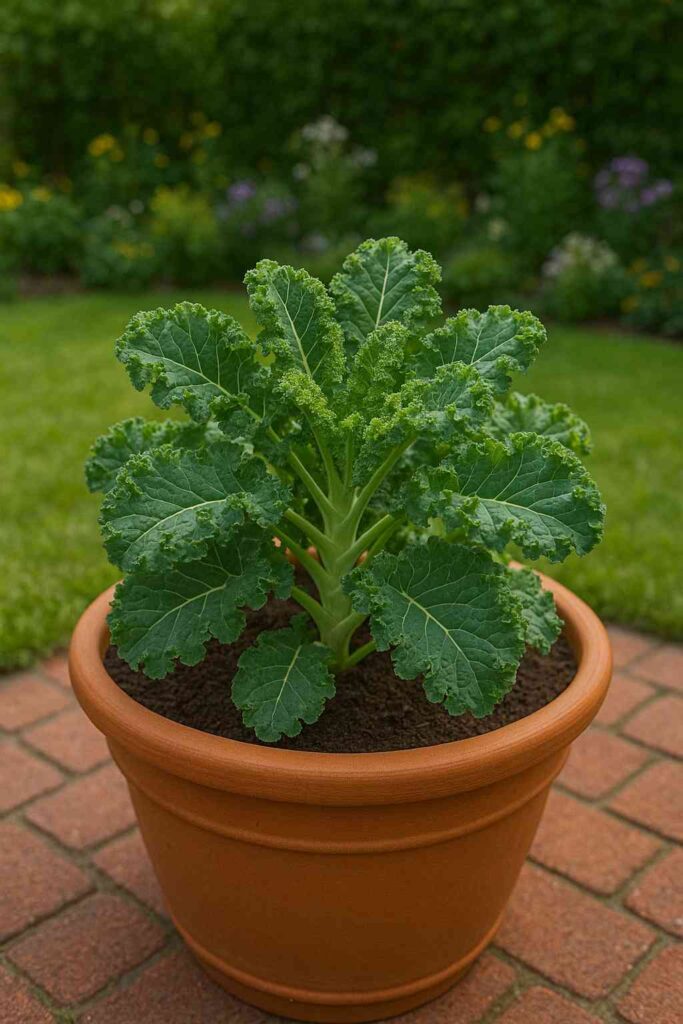
Kale has become incredibly popular, and for good reason—it’s ridiculously hardy and actually tastes sweeter in cooler temperatures. Dwarf varieties like Dwarf Blue Curled or Winterbor fit better in indoor spaces than those massive outdoor plants. One container can feed you for months if you harvest correctly.
Use 8–10 inch deep containers for kale. Sow seeds half an inch deep and thin to 6–8 inches apart. Provide 6–8 hours of sunlight or 12–14 hours under grow lights. Keep soil moist and feed every 3–4 weeks. Harvest lower leaves first, leaving the crown intact.
4. Arugula

Here’s something most people don’t know: arugula grows faster than almost any other green, often ready to harvest in just three weeks! It has that distinctive peppery bite that makes salads interesting. Plus, it doesn’t complain about the shorter winter days.
Scatter arugula seeds thinly in shallow containers and cover lightly. Water gently. Provide moderate light and keep soil moist at 60–70°F. Harvest leaves at 2–4 inches; older leaves become bitter and tough.
Check this: 8 Vegetables to Plant in November
5. Microgreens

Microgreens are basically vegetable seedlings harvested when they’re tiny, but don’t let that fool you—they pack intense flavor and nutrition. You can grow radish, broccoli, mustard, beet, and dozens of other microgreens in just 7-14 days. They need minimal space, making them perfect for small apartments.
Use shallow trays with 2 inches of soil. Scatter seeds densely and mist daily. Place in bright light once sprouts appear. Harvest with scissors when first true leaves develop, usually in two weeks. Rinse the tray and start a new batch.
6. Swiss Chard

Swiss chard is gorgeous—those bright red, yellow, and orange stems look like they belong in a flower arrangement. But it’s also incredibly productive and tolerates the imperfect conditions of indoor growing better than many vegetables. Rainbow chard varieties offer the prettiest stems.
Plant chard seeds an inch deep in 8-inch containers. Thin seedlings to 4–6 inches. Keep soil moist and provide bright light. Feed monthly. Harvest outer leaves at 6–8 inches. Chard is forgiving and will produce for months.
7. Cilantro

Cilantro divides people—you either love it or think it tastes like soap (blame your genes for that). If you’re in the love-it camp, growing cilantro indoors means fresh herbs for tacos, curries, and salads all winter. It does bolt quickly in warm conditions, but indoor temperatures usually keep it producing longer.
Use 8-inch deep containers for cilantro. Sow seeds half an inch deep and keep soil moist until germination. Then water when the top inch is dry. Provide at least 6 hours of bright light. Harvest outer leaves at 4–6 inches. Flowering seeds can be used as coriander.
8. Parsley

Parsley is one of those herbs you always need just a little bit of, making it perfect for indoor growing. Both flat-leaf (Italian) and curly varieties grow well inside, though flat-leaf has more flavor. Fair warning: parsley seeds are notoriously slow to germinate—sometimes taking 3 weeks.
Soak parsley seeds overnight, then plant half an inch deep in 6–8 inch containers with good drainage. Keep soil moist and provide bright light. Parsley tolerates occasional misting. Harvest outer stems at the base to encourage bushy growth. Plants will produce for months once established.
9. Basil

Basil loves warmth, so winter indoors suits it better than cold outdoor temperatures. The smell alone makes it worth growing—nothing beats fresh basil for pasta, pizza, or caprese salad. Genovese is the classic variety, but try Thai basil or purple basil for something different.
Basil needs 65–75°F and 10–12 hours of light. Sow seeds a quarter-inch deep in well-draining soil and keep moist. Ensure containers drain well and provide humidity. Pinch growing tips to encourage bushy growth. Remove flower buds to keep leaves producing.
10. Chives

Chives are practically indestructible, making them ideal for beginners or anyone who occasionally forgets to water. They’re perennials that grow in clumps, and you can harvest them repeatedly by cutting leaves to about 2 inches above the soil. The mild onion flavor works in everything from eggs to soups.
Start chives from seeds or a small store pot. Use 6-inch containers and allow slight crowding. They grow in lower light but thrive with 6–8 hours of bright light. Water when soil is dry an inch down. Cut leaves regularly to keep plants healthy and prevent flowering.
11. Thyme

Thyme is tough as nails and doesn’t mind the drier air in heated homes during winter. This Mediterranean herb prefers life on the dry side, so it’s perfect if you’re not great at remembering to water. A little thyme goes a long way in cooking—those tiny leaves pack serious flavor.
Plant thyme in well-draining soil with sand or perlite. Keep in bright light and water only when dry. Grow slowly but steadily. Harvest sprigs as needed, cutting a third of the stem. Regular pruning keeps plants compact and bushy.
12. Oregano

Oregano and pizza are best friends, but this herb also enhances countless other dishes. It’s another Mediterranean herb that prefers drier conditions, making it low-maintenance for indoor growing. Greek oregano has the strongest flavor, while Italian oregano is slightly milder.
Oregano needs well-draining soil with perlite or sand. Provide bright light and water only when soil is dry. Harvest stems regularly to keep it bushy. Leaves taste stronger when dried.
Also Read: 27 Fall Garden Ideas to Refresh Your Outdoor Space
13. Mint

Mint is aggressive—in outdoor gardens, it takes over everything. Indoors, that aggressive nature becomes an advantage because it grows enthusiastically in containers. Spearmint and peppermint are classic choices, but chocolate mint, apple mint, and other varieties offer fun flavor variations.
Grow mint from cuttings or starter plants in 8-inch containers. Keep soil damp and provide bright or partial light. Harvest stems often to control growth and encourage new shoots. Homegrown mint adds fresh flavor to tea, cocktails, and dishes.
14. Scallions (Green Onions)

Here’s the easiest indoor vegetable trick ever: buy scallions from the grocery store, use the green tops, and replant the white root ends. They’ll regrow in your windowsill. You can also grow scallions from seeds, but the regrowth method gives instant gratification.
Place scallion roots in a small container with an inch of water, changing it often, or plant directly an inch deep. Keep soil moist with moderate light. Snip green tops when needed, leaving 2 inches. They regrow for several months before replacement is needed.
15. Radishes

Most people don’t think of radishes as indoor plants, but small varieties grow surprisingly well in containers. They’re one of the fastest vegetables you can grow—some varieties mature in just 25 days. Easter Egg radishes offer pretty colors, while French Breakfast radishes have a mild, sweet flavor.
Radishes need 6-inch containers. Plant seeds half an inch deep, an inch apart. Keep soil moist and provide 6–8 hours of light. Thin seedlings to 2 inches. Harvest when roots reach recommended size; waiting too long makes them woody. They germinate quickly, usually in 3–5 days.
16. Carrots
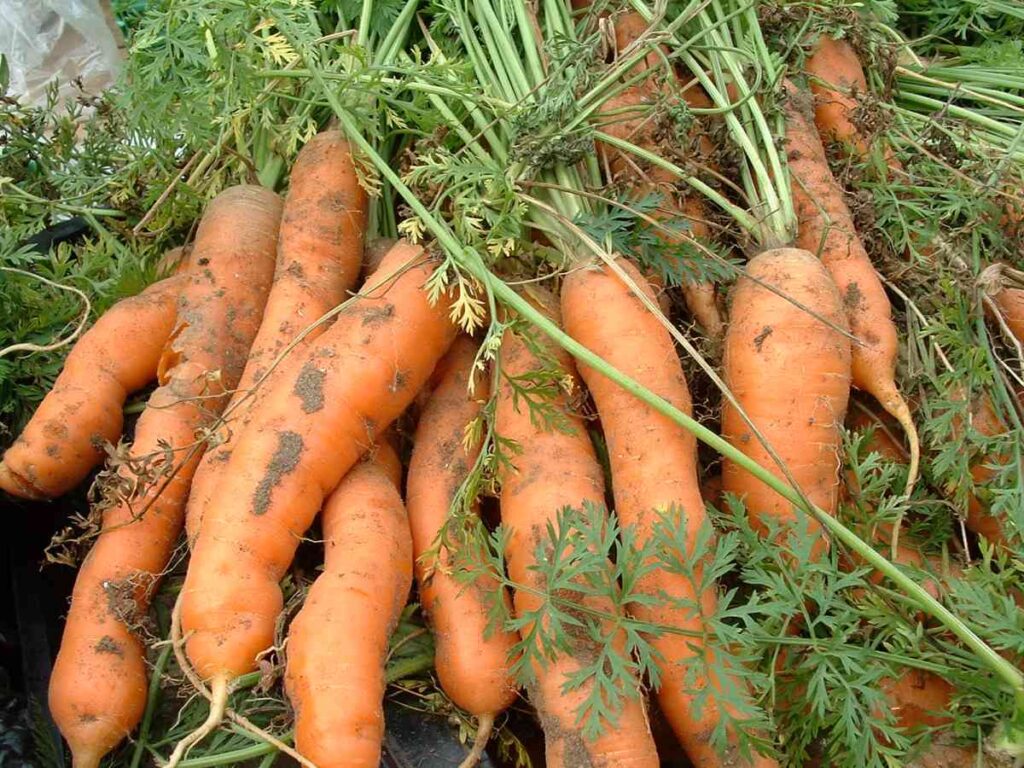
Growing full-sized carrots indoors is challenging, but small varieties like Paris Market, Thumbelina, or Little Finger work beautifully. There’s something magical about pulling your own carrots, even if they’re miniature. Kids especially love this.
Carrots need 12-inch deep containers and loose, rock-free soil. Sow seeds thinly and cover lightly. Keep soil moist; seeds take 2–3 weeks to germinate. Thin seedlings to 2 inches apart. Grow in bright light at 60–70°F. Harvest when roots reach the soil surface.
17. Cherry Tomatoes

Tomatoes are ambitious for indoor growing, but dwarf or micro varieties like Tiny Tim, Red Robin, or Micro Tom can produce real tomatoes indoors. Don’t expect huge harvests like outdoor gardens, but even a handful of fresh tomatoes in February feels like a miracle.
Tomatoes need 12–14 hours of bright light and warm temperatures (70–80°F). Use 8–10 inch containers with good drainage. Start with seedlings. Keep soil moist and feed weekly after flowering. Shake flowers to aid pollination. Support plants with stakes, even small varieties.
18. Bell Peppers

Peppers handle indoor conditions better than tomatoes and can produce fruit for months with proper care. Dwarf varieties or ornamental peppers work best. Even if you don’t get huge harvests, watching peppers grow and change color brightens dreary winter days.
Peppers need bright light (12–14 hours) and warm temperatures (75–80°F). Use 8-inch containers with loose, well-draining soil. Keep soil moist, not wet. Feed every two weeks after flowering. Shake flowers to help pollination. Harvest at full size, even if still green.
19. Hot Peppers
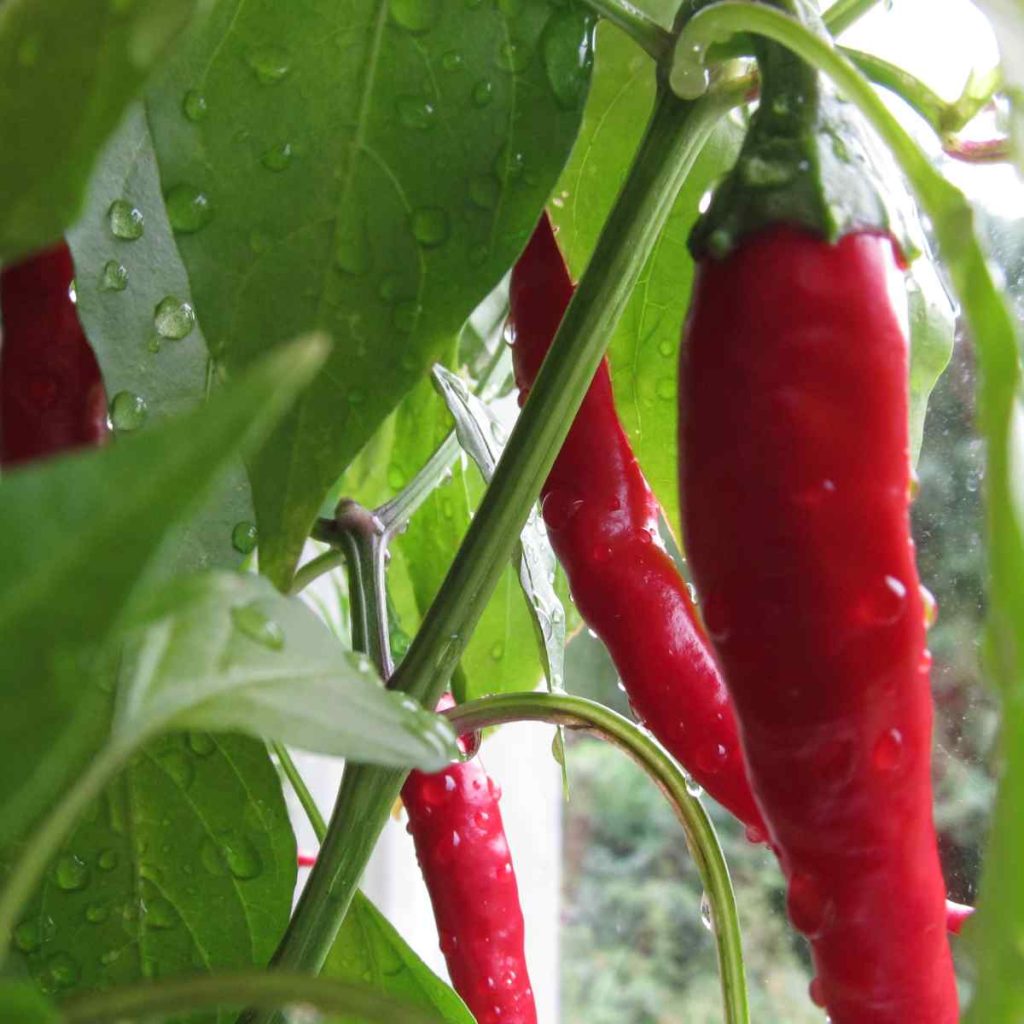
Hot peppers actually grow more successfully indoors than bell peppers because they tolerate slightly lower light and set fruit more reliably. Varieties like jalapeño, cayenne, Thai chilies, or habanero can produce impressive harvests. Fresh hot peppers have completely different flavor than dried ones.
Hot peppers need bright light, warmth, and consistent moisture. Use 6–8 inch containers. They can produce fruit for several years. Harvest when fully grown and colored. Wear gloves with very hot peppers and avoid touching your face.
20. Dwarf Eggplant
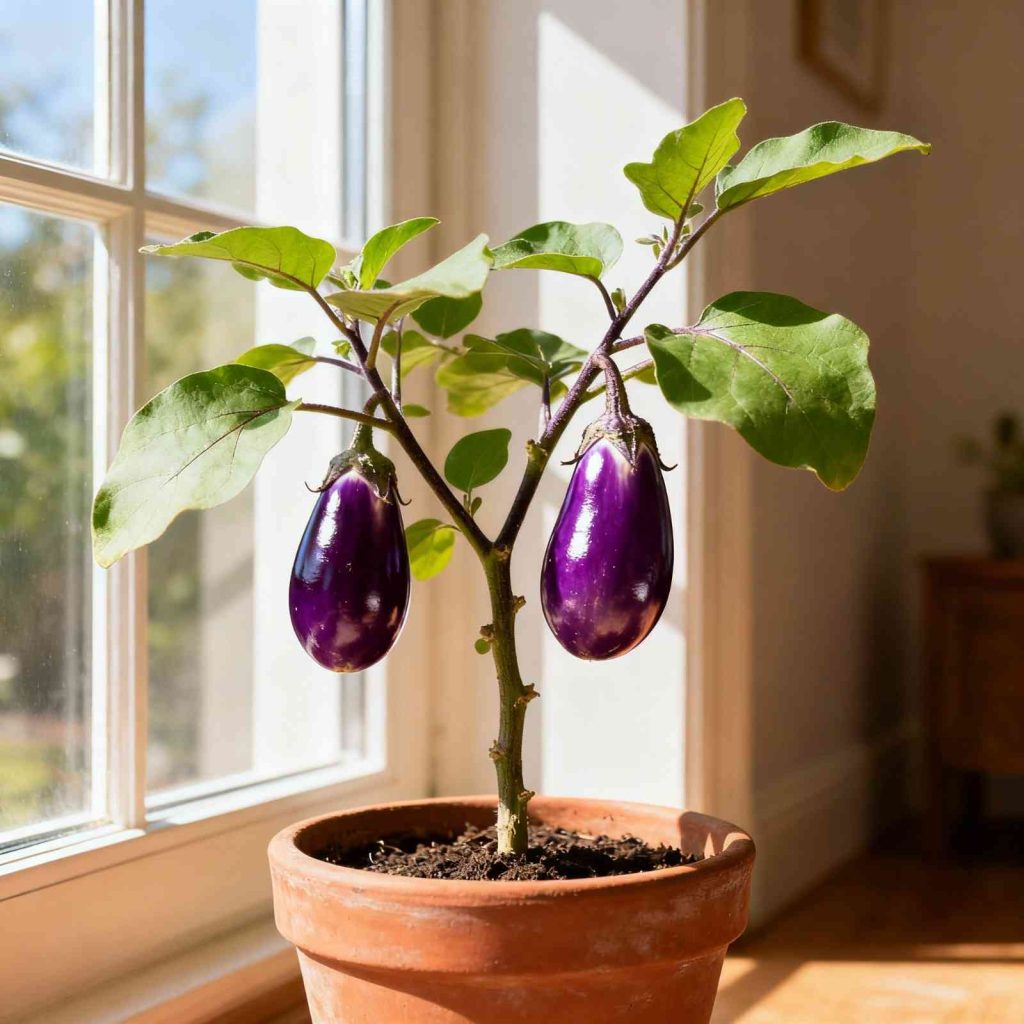
Eggplant might seem impossible for indoor growing, but mini varieties like Fairy Tale or Little Finger produce small fruits in containers. They’re beautiful plants too, with purple flowers and glossy fruits. Eggplants need commitment—they take longer than quick-growing greens.
Eggplants need bright light and warm temperatures (75–85°F). Use 10–12 inch containers and start from seedlings. Keep soil moist and feed weekly after flowering. Tap flowers to help pollination. Harvest fruits at 3–4 inches when skin is glossy; dull skin means overripe.
21. Peas
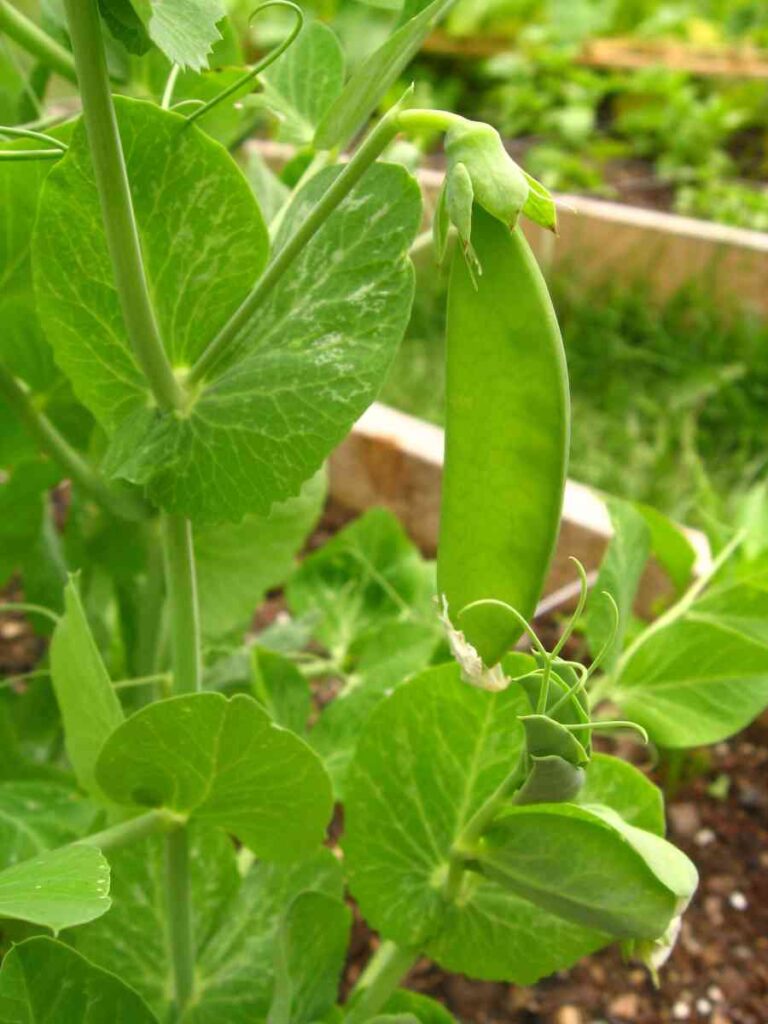
Dwarf pea varieties like Tom Thumb or Little Marvel can grow in containers and produce sweet pods. Both snow peas and snap peas work well. Peas actually prefer cooler temperatures, making them ideal for windows in unheated rooms or cooler spots in your home.
Plant peas an inch deep in 8-inch containers. Provide a trellis or stakes to climb. Keep soil moist, especially during flowering. Grow in bright light at 60–70°F. Harvest snow peas when pods are flat, snap peas when pods are full but crisp.
Must Read: 19 Vegetables to Plant in Fall
22. Beets

Beet greens are incredibly nutritious, and you get a bonus root vegetable too. Small varieties like Detroit Dark Red or Golden Detroit work best for containers. Some people actually grow beets just for the greens, harvesting leaves continuously without worrying about root development.
Use 8–10 inch containers for beets. Sow seeds, then thin seedlings to 3–4 inches. Beets tolerate partial shade. Keep soil moist to avoid tough roots. Harvest leaves at 4–6 inches, or wait 50–70 days. Pull roots at 1–2 inches for best flavor.
23. Bok Choy

Bok choy grows faster than most vegetables—baby varieties are ready in just 30 days. It has a mild, slightly sweet flavor perfect for stir-fries, soups, or eating raw. Bok choy prefers cooler temperatures, so it’s perfect for winter windowsills.
Plant bok choy seeds half an inch deep in 6–8 inch containers. Space baby plants 4 inches, larger ones 6–8 inches. Keep soil moist and provide bright light. Grow at 60–70°F. Harvest baby bok choy at 4–6 inches or pick outer leaves from larger plants when crisp and full.
Also Read: 13 Easy Vegetables to Grow in Summer
24. Mustard Greens
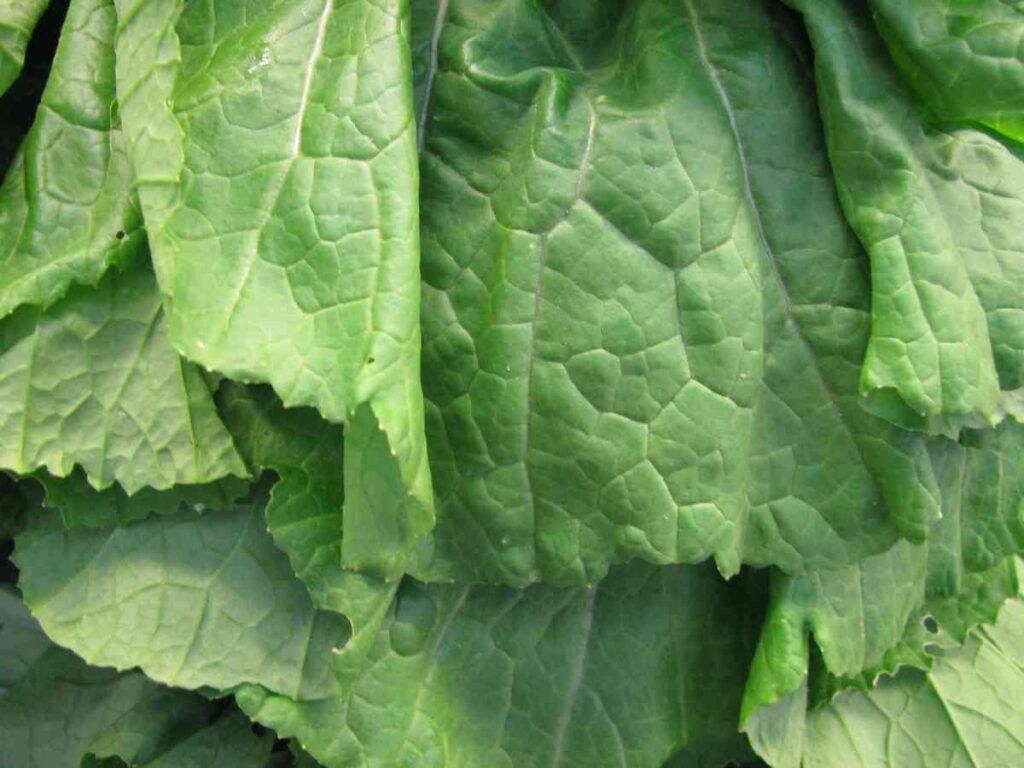
Mustard greens offer a spicy kick similar to arugula but with more substance. They grow incredibly fast—often ready to harvest in 3-4 weeks. Red Giant and Green Wave are popular varieties that grow well indoors. These greens are packed with vitamins and add zip to salads or stir-fries.
Sow mustard seeds a quarter-inch deep in 6-inch containers. Thin seedlings to 4–6 inches. Keep soil moist and provide bright light. Cooler temperatures help tender leaves. Harvest outer leaves at 4–6 inches. Young leaves are mild; older ones are spicier. Regular picking keeps plants producing through winter.
25. Celery

Growing full celery stalks indoors is difficult, but you can regrow celery from scraps or grow leaf celery (cutting celery) for fresh greens. Leaf celery has the same flavor as regular celery but grows in bushy clumps like parsley. It’s actually easier and more productive than regular celery.
Cut 2–3 inches from a celery base and place in shallow water. Change water daily. When roots and leaves appear, plant in soil. For leaf celery, sow seeds a quarter-inch deep. Use deep containers, bright light, and keep soil very moist. Harvest outer stalks as needed.
26. Garlic Greens
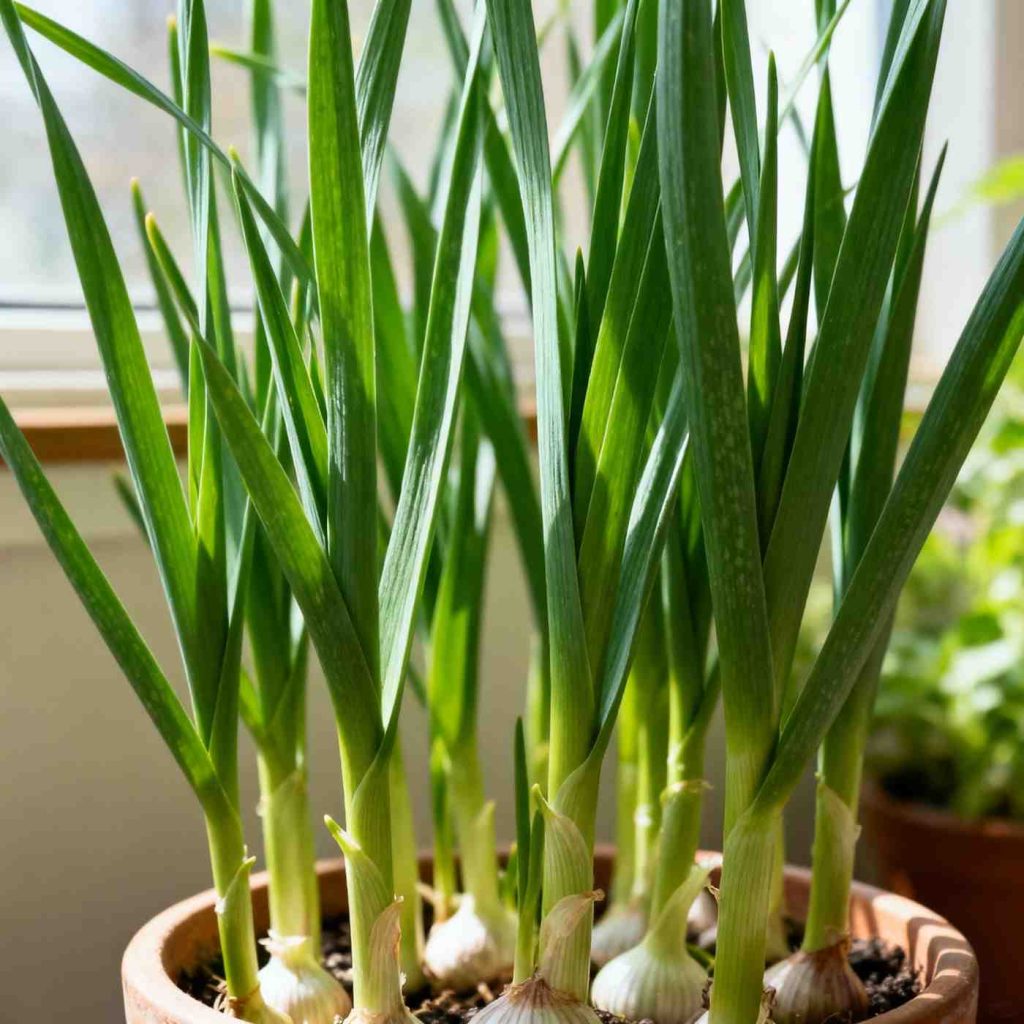
Growing full garlic bulbs indoors takes too long and too much space, but growing garlic greens is easy and rewarding. Garlic greens taste like mild garlic and work perfectly in any dish where you’d use garlic or chives. Plus, you can use cloves from your kitchen—no special seeds needed.
Separate a garlic bulb and plant cloves pointy-end up, an inch deep. Space 2–3 inches apart. Keep soil moist and place in bright light. Shoots appear in a week. Grow 8–10 inches, then cut, leaving 2 inches. Cloves keep producing shoots for months.
27. Watercress

Watercress has a peppery, slightly bitter taste that livens up salads and sandwiches. Despite the name, you don’t need running water to grow it—just very moist soil and bright light. It’s one of the most nutrient-dense foods you can eat, packed with vitamins and minerals.
Watercress grows best in moist containers with drainage. Sow seeds on the surface and press lightly. Keep soil wet but not flooded. Place in bright light for 6–8 hours. Use shallow trays of water for steady moisture. Harvest stems at 4–6 inches; plants regrow fast.
Must Read: 19 Vegetables for Your Winter Garden
Conclusion
Growing vegetables indoors in winter lets you enjoy fresh, nutritious greens year-round. With the right containers, light, and consistent care, even cold-season crops thrive inside.
Regular watering, proper spacing, and timely harvesting keep plants healthy and productive. Indoor gardening turns winter into a season of growth and flavor.

Khaja Moinuddin, a computer science graduate, finds joy in gardening and homesteading. Join him on this blog as he shares his experiences in homesteading, gardening, and composting